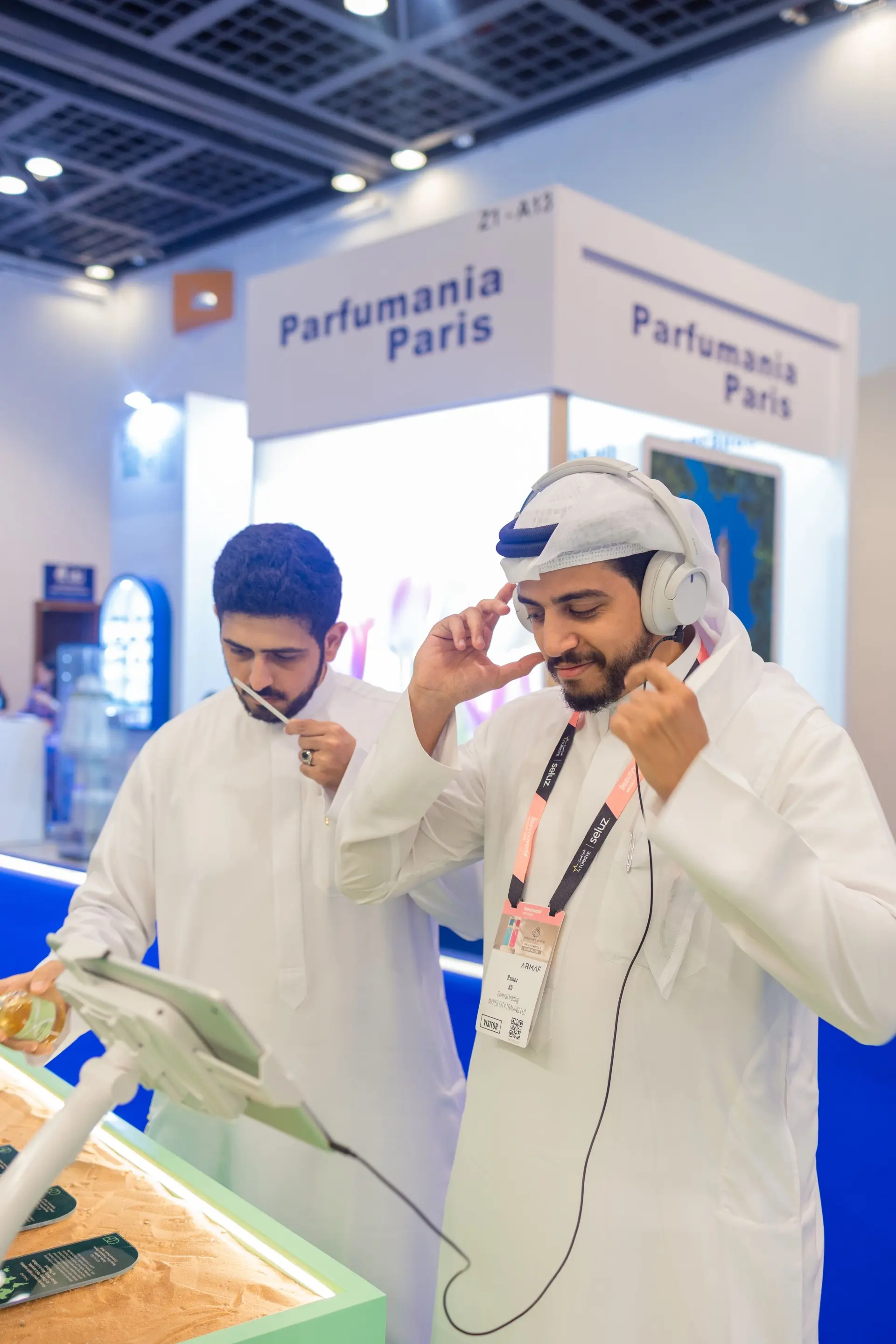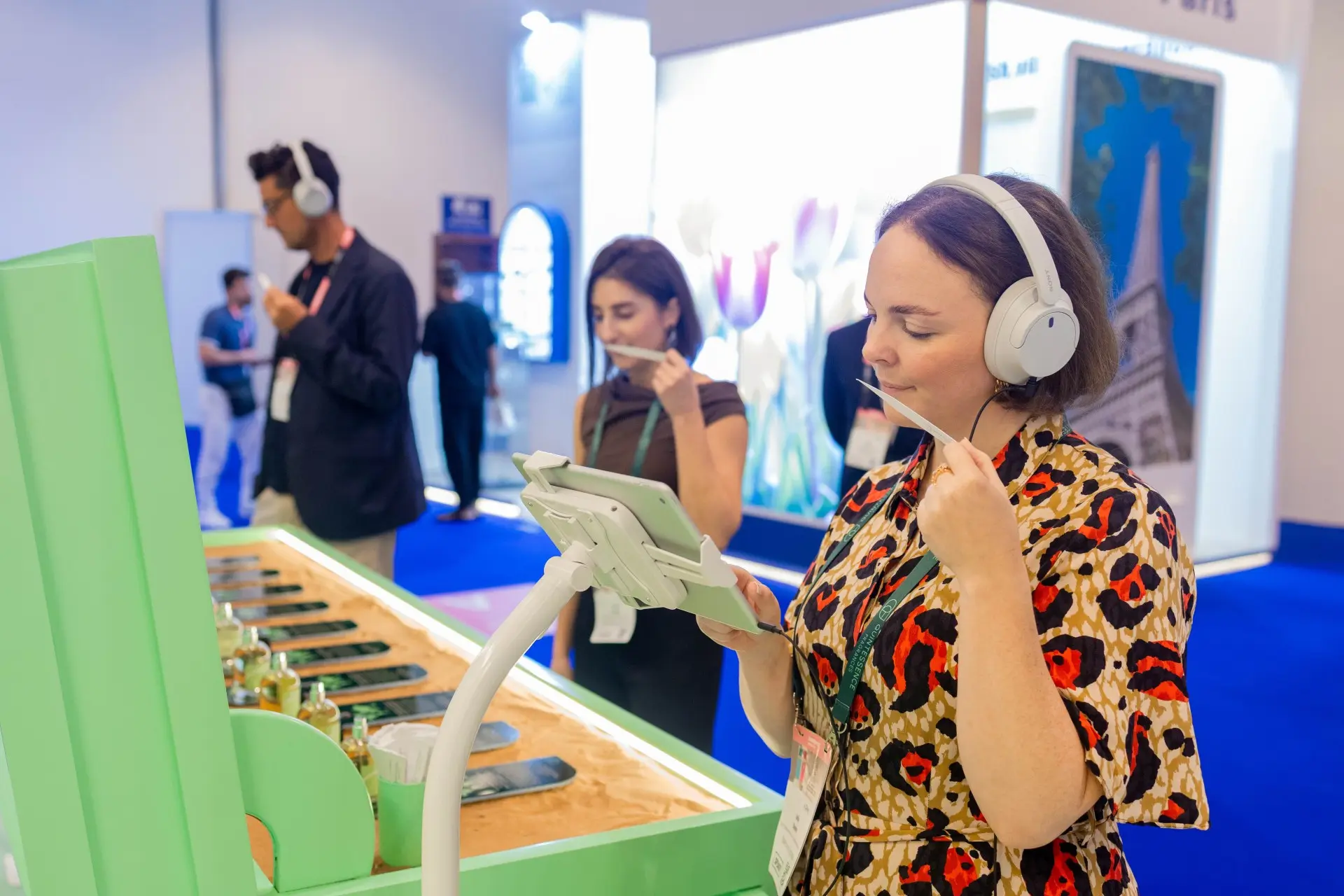DLMDD has premiered its pioneering multisensory innovation in scent and sound branding in the Middle East, in creative partnership with global fragrance house Quintessence Fragrances.
Hosted at the Dubai World Trade Centre - one of the world’s leading global fragrance summits - the debut marked a bold step into multisensory brand expression.
At the centre of the experience is the Olfactive Atlas - a world-first symphony of scent and sound technology. This immersive journey unveils ten evocative travelogues, each pairing a bespoke fragrance design with a meticulously composed soundscape to explore place, memory and cultural expression.
From the thrilling sensory surge of Bangkok’s bustling streets, to the tranquil greenery and gentle hush of Manhattan’s Central Park. Then on to the rich, caramelised warmth of burning milk and sugar in Buenos Aires - the unmistakable aroma of dulce de leche - and the spiritual cadence and deep tradition of the Middle East. Each chapter opens a window into the soul of a place.
As audiences close their eyes, breathe in the fragrance, and open their ears to the sound, they are transported across emotions, cultures and communities around the world, without moving an inch.
The rise of multisensory branding
In the last ten years, sonic branding has evolved from niche craft to cultural force - and DLMDD has stood at its vanguard, defining the soundscapes of iconic brands worldwide.
Having a ubiquitous brand sound has shifted from a “nice to have” to a “must have” and hundreds of brands are working towards their own “Tu-dum” moment with the goal of being distinctive and instantly recognisable across cultures.
As branding increasingly considers all five senses, the natural next step from identity in sound is identity in scent.
Scent is the most powerful human sense for memory and has long held a meaningful place in culture throughout the Middle East.
Yet, it remains one of the most underused tools in branding.
DLMDD is now the world's first agency to bring sound and scent creation together in one place, offering brands across the globe the chance to explore multisensory identity in a unified creative approach.



